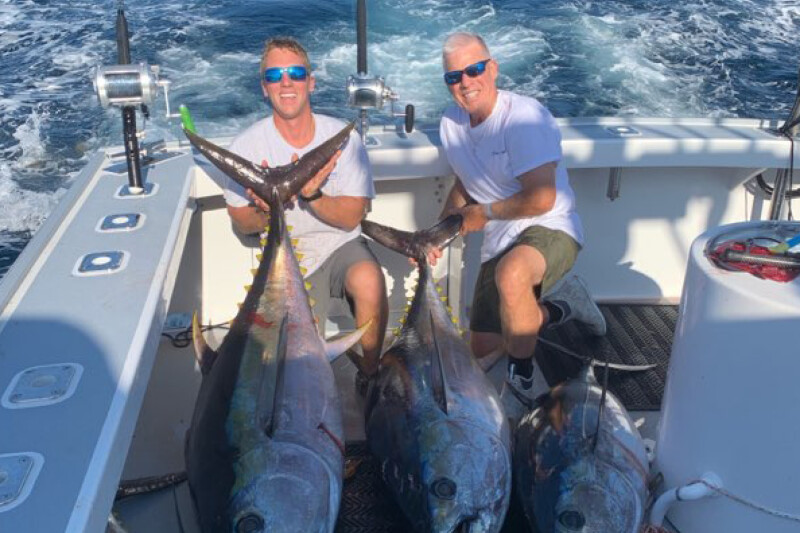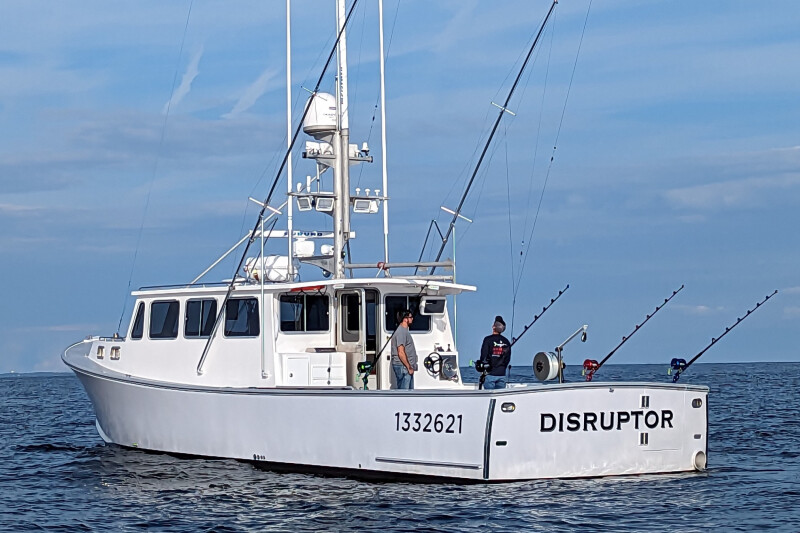David Szewczul of Old Saybrook, Connecticut, fishes for bluefin tuna in the waters along the edge of the continental shelf from Cape Cod to the Carolinas. “I started fishing stripers from a dinghy, then I was fishing a lot of center console boats, but going after tuna, I found myself going further out and staying overnight. My father was going with me when he could, and we’re out there at the canyons for three or four days, and we needed a little more comfort,” says Szewczul.
Szewczul also saw a healthy stock and, along with two partners, set up a seafood wholesale company, American Seafood, to handle his fish. “My partners are like brothers to me. We started it as a sideline, but it’s becoming a full-time second job,” he says. He needed a boat to meet the demands of his evolving fishing business and went to Maine to have one built. After looking at several designs, he settled on the 46-foot Mussel Ridge hull built by Alfred Hutchinson in Cushing, Maine. “It was a two-year process,” Szewczul says. “About a year of actual building.” Szewczul, now 29 years old, was ready to make some tradeoffs in the hull he wanted. “I looked at a few hulls. With the Mussel Ridge, I’m sacrificing some speed and fuel efficiency, but in rough seas, there’s no comparison, in my opinion. That’s what I wanted: a boat that would give me a bigger weather window to fish. I can go 100 miles out and come back and not feel like I’ve been in a 12-round fight.” Szewczul Reports hitting a top speed of a little over 22 knots during sea trials but cruises at 15 to 16 knots. 14 knots.
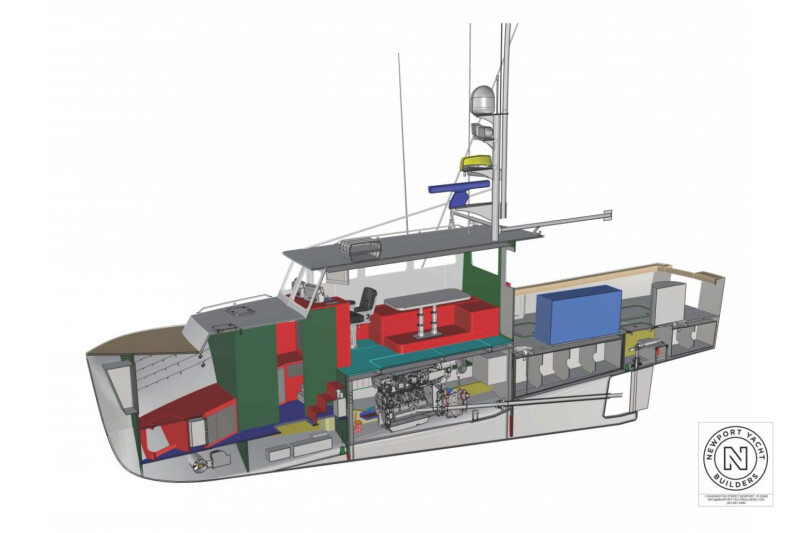
Hutchinson popped the hull and top out of the mold, but his contribution to the project pretty much ended there. “We put some cross-members in to hold its shape and bolted the top on,” says Szewczul. “Then we trucked it down to Newport Yacht Builders in Rhode Island to finish it.”
While he considered having the boat finished in Maine, Szewczul chose to take his boat to Rhode Island for a number of reasons. “I made two or three trips up there, and it’s a long way,” he says. “I wanted the boat closer to home so I could be more involved. Another thing is the technology available to Newport Yacht Builders. They went up to Maine and laser-scanned the entire hull while it was being built. Then, they came back and started building components without the boat being there. The hull was supposed to arrive by July, and it was a few weeks late, but it didn’t matter. I didn’t lose any time because as soon as it got there, they started dropping in pieces and panels that they had ready.” Overall, Szewczul figures the cost of finishing the boat in Maine or Rhode Island may have been about the same, but the savings in time and travel made it worth it to bring the boat south.
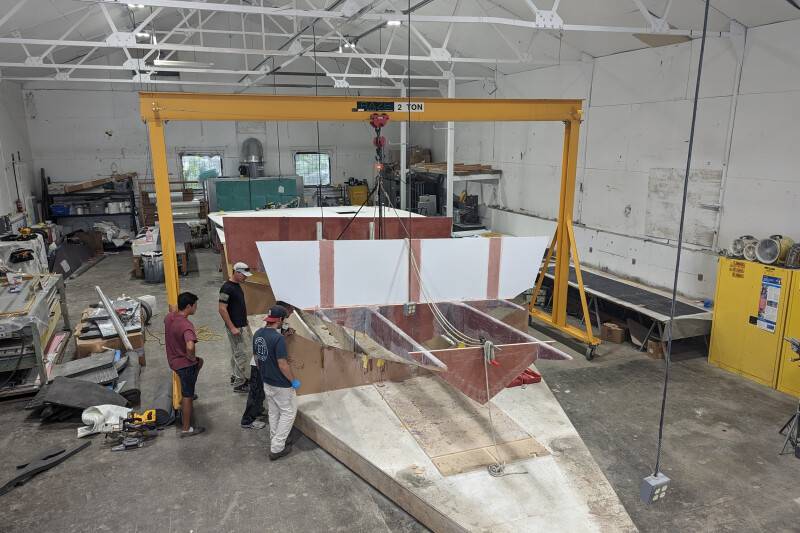
“When we got it down to Newport, we took it apart, put in the stringers, and put everything else down here. Jim Thompson was the guy at Newport Yacht; I was lucky to have a great team. I was amazed at the quality of their work.”
According to Jim Thompson, who started Newport Yacht Builders, the process they used saved time in many ways. “Because we were building on a platform, there wasn’t any climbing up and down ladders to get into the boat,” Thompson says. “We had a laser scan of the inside skin of the hull and everything modeled down to the pipe runs for the hydraulics and the runs for all the wire. We had our equipment list, and we were able to drop everything in.”
With the precision information available, the Newport Yacht Builders team could pre-cut all the panels and bulkheads. “We cut the bigger pieces—mostly 2-inch thick Nidacore—1/8th
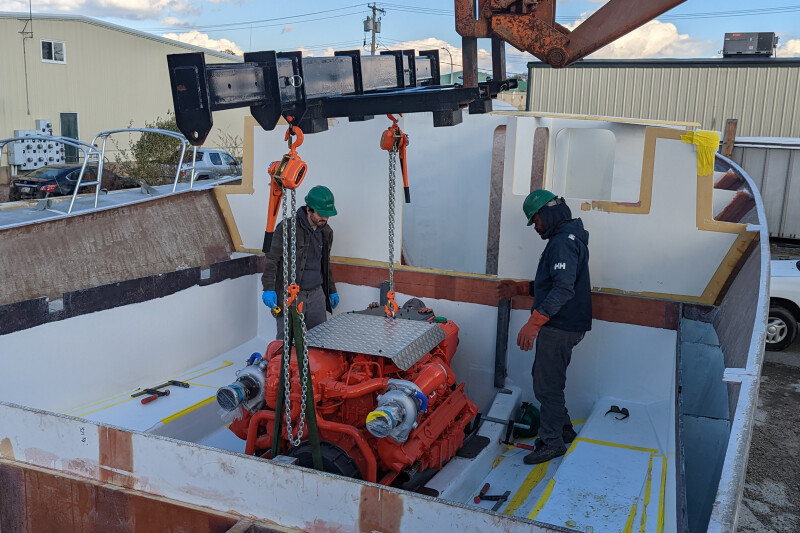
of an inch smaller than they needed to be because it’s easier to fill that in than be down there grinding,” says Thompson. With the smaller stuff, we cut it right on the line.”
For power, Szewczul opted for a 1,000-hp Scania DI16. “I got it from Mack Boring, of course, but through Yankee Marine Diesel in New Bedford.” He coupled the Scania with a Twin Disc MGX5136A gear at 2:1 reduction, which turns a 3-inch Aquamet 22 shaft and a 5-blade 34 x 32 Veem propeller—made in Australia and distributed by Hale Propeller in Old Saybrook.
Aft of the engine, Szewczul has a 580-gallon fuel tank amidships and another 260-gallon tank amidships against the transom. Alongside those, he has arranged as much of a fish hold as he can on the shallow draft hull. “I have three large in-deck fish holds,” says Szewczul. “I also have a box on deck to hold ice and fish. I laid the boat out in a way that maximized hold space with a maximum fuel capacity for the layout I preferred. I didn’t do any ice makers or freezer plates in them as it’s another maintenance item/cost. All holds are insulated; I fill them with ice, and they hold ice well. We bleed our fish and pack them with ice in the holds.”
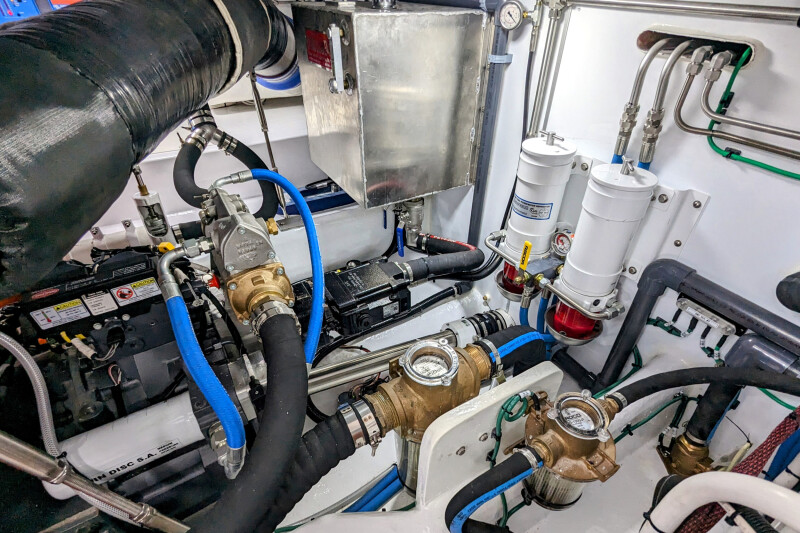
On deck, Szewczul has an array of rods, a hauler, and a bandit reel. “Ransom Morse from Buzzards Bay did all the hydraulics and plumbing,” he says. “I was blown away by his work.” Morse set up the hydraulic pump off the Twin Disc gear. Drawing on a 36-gallon reservoir, it powers the steering, a 12-inch Hydro-Slave hauler, and an Elec-Tra-Mate bandit reel made by Carl Huffman in Greensboro, North Carolina. “They’re usually electric, but he makes hydraulic too,” says Szewczul. “It used to be Waterman, which was the staple in the industry, but Carl took it and added some really good engineering, like a very smooth valve lever and two drag washers, so the drag was smoother and stronger. It’s all military-grade anodized aluminum.” Szewczul notes, however, that the Elec-Tra-Mate reel uses a universal hydraulic motor. “So if that blows, it’s easy to replace,” he says.
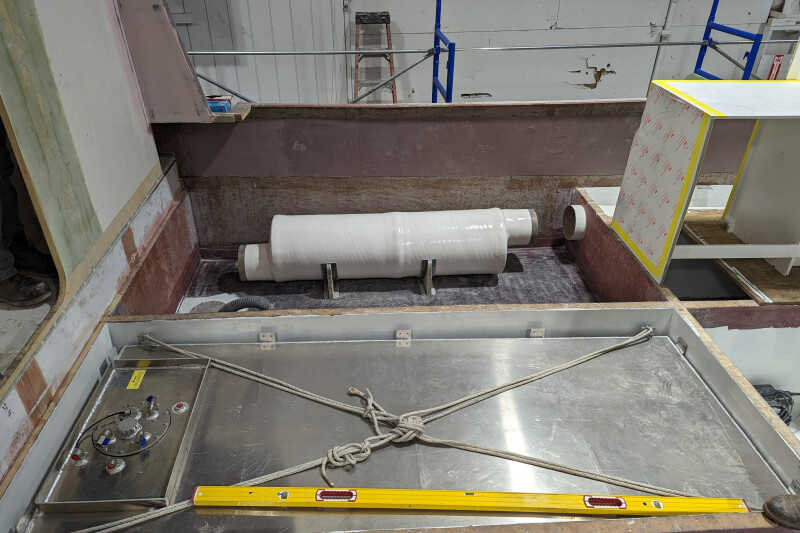
“When we’re fishing, I set that out first. Then I set up seven or eight rods, and I mostly use custom rods from J&B tackle in Niantic.” According to Szewczul, he mostly uses Alutecnos Albacore 80 reels. “I’ll set them up with plastic squids or Ballyhoo and spread them out with the outriggers. When we’re giant fishing, I might use a couple of Alutecnos Albacore 130s. Whenever I’m out in the canyons, and I am drifting or night fishing, we might use live bait,” he says. For night fishing, he adds that he uses Durabrite lights to illuminate the deck and water around the boat.
“He has a 12kW Northern Lights genset,” says builder Jim Thompson. “It’s mostly for the hotel and to power those Durabrites.” The genset also runs a 24v Sideshift bow thruster.
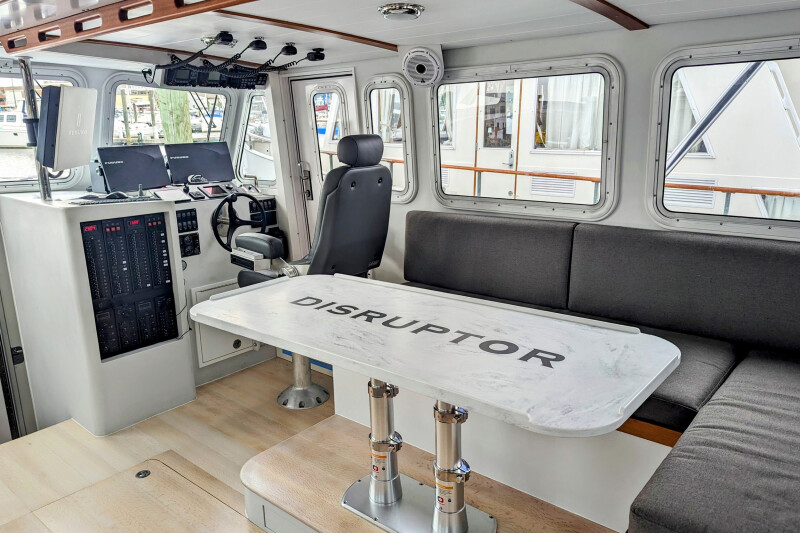
In the wheelhouse, Szewczul has an L-shaped couch that can double as a bunk and a full galley. “We have a sink, dual drawer fridge/freezers, microwave, oven, stovetop, and an electric grill out back in the cockpit. There’s AC and heat, a TV, a full shower and head.” Beside the L-couch, Szewczul has three bunks down forward. “I can take four or five people on canyon trips,” he says. “When we’re giant fishing, I prefer just two or three.
For Electronics, Szewczul turned to Jon Arruda, owner of Ethos Marine Systems LLC in Tiverton, Rhode Island. “He installed the package and did all the wiring on the boat,” says Szewczul. “I went with Furuno and TimeZero; the list includes Furuno MFD at the helm (2); Furuno Monitor running TimeZero at the helm; Furuno MFD out back in the cockpit; Simard Auto Pilot at the helm; Furuno 25kw open array radar; Furuno 4kw dome radar; FLIR camera; SAT Phone; KVH HD TV dome for satellite TV; Satellite Radio; Dual VHF radios.”
For both Thompson and Szewczul, the process was a good experience. “David and Ransom and Jon Arruda did thorough planning that made everything go smoothly,” says Thompson. For his part, Szewczul wonders if this is just his first boat. “I can see how people can get addicted to building boats,” he says. “But I think I’m good for now.”
